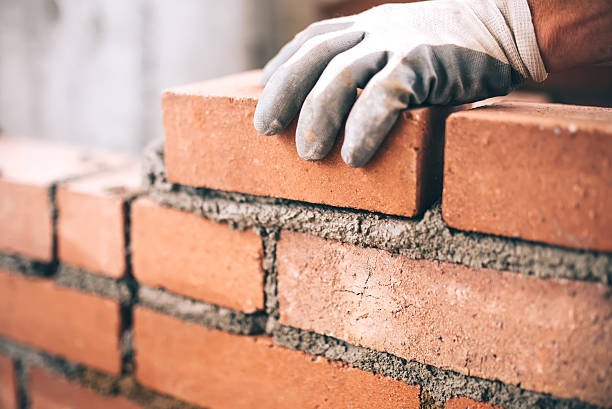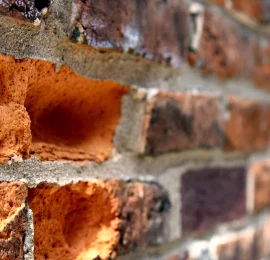Opening the Keys of Lasting Masonry Construction Practices for Eco-Friendly Structures
Among the myriad strategies to environmentally friendly structure, sustainable masonry building and construction stands out as a time-tested and long lasting method that holds a wide range of untapped potential. From the option of materials to ingenious building and construction techniques, the tricks to attaining sustainability within stonework construction are multifaceted and appealing.
Advantages of Lasting Masonry Construction
Welcoming lasting masonry construction practices not just minimizes environmental impact but additionally uses long-lasting economic advantages to building contractors and areas. By using materials like recycled bricks, obstructs, and stones, building contractors can substantially lower the carbon impact of their projects while promoting source efficiency. Additionally, sustainable masonry building strategies, such as proper insulation and thermal mass properties, can enhance power performance within structures, causing decreased operational costs with time.
Additionally, the longevity and strength of masonry frameworks add to long-term financial advantages. Buildings constructed using lasting masonry techniques typically need less repair and maintenance, translating to set you back savings for building contractors and residential or commercial property owners. The durability of stonework materials additionally makes sure that frameworks stay secure and safe, decreasing the demand for regular restorations or replacements.
Eco-Friendly Masonry Materials
Making use of environmentally friendly masonry products is an essential action in the direction of enhancing the sustainability of construction practices and minimizing ecological impact while taking full advantage of lasting economic benefits. Lasting masonry products are sourced, generated, and used in a fashion that reduces overall environmental effect. Materials such as recycled bricks, recovered stone, and sustainable concrete blocks are ending up being significantly preferred selections for eco-conscious builders. Recycled blocks, for example, not just draw away waste from land fills yet additionally call for much less power to produce contrasted to brand-new bricks. Recovered stone offers a distinct aesthetic appeal while reducing the need for brand-new quarrying. Lasting concrete obstructs integrate recycled aggregates and might include enhanced insulation residential properties, adding to power effectiveness in buildings.
Additionally, all-natural materials like adobe, rammed planet, and straw bales provide superb thermal mass residential properties, decreasing the need for home heating and cooling power. These materials are usually locally readily available, promoting local economic situations and minimizing transportation-related carbon emissions. By choosing eco-friendly stonework products, building tasks can significantly lower their environmental impact and add to the development of much healthier, much more lasting developed atmospheres.
Energy-Efficient Stonework Techniques
Power performance plays an essential role in improving the sustainability of masonry building methods. One crucial energy-efficient stonework strategy is the usage of thermal mass, which includes integrating dense materials like concrete or block right into the structure's framework to take in and store heat.

Advancements in Sustainable Masonry
Current developments in lasting masonry practices have actually brought around ingenious techniques that are reshaping the construction market. One such advancement is the development of self-healing concrete, which makes use of microorganisms installed within the concrete to heal cracks autonomously. This breakthrough not just decreases upkeep costs but likewise enhances the longevity of masonry frameworks, adding to their sustainability.
Another significant innovation is making use of recycled accumulations in masonry building - masonry contractor. By incorporating products such as crushed ceramic waste or recycled glass right into concrete mixes, builders can minimize the ecological impact address of building tasks while maintaining structural stability. This technique not only draws away waste from land fills however additionally conserves natural resources, making it a crucial innovation in sustainable masonry construction
Moreover, the assimilation of electronic layout devices, such as Structure Details Modeling (BIM), is reinventing the method stonework frameworks are prepared and built. BIM enables more accurate computations, decreased material waste, and improved energy efficiency, ultimately leading to more lasting structure methods. These advancements jointly symbolize an appealing future for sustainable masonry building and construction in the period of eco-friendly buildings.
Future Trends in Stonework Sustainability
With the cutting-edge strides made in lasting masonry practices, the future fads in stonework sustainability are poised to further change the building and construction market. Among the essential fads shaping the future of stonework sustainability is the boosted combination of technology. Innovations such as Structure Information Modeling (BIM) and digital truth simulations are being utilized to optimize stonework construction procedures, causing decreased product waste and enhanced energy performance in buildings.
Furthermore, the advancement of novel lasting materials is set to play a substantial function in boosting the eco-friendliness of stonework construction. masonry contractor. Technologies important link like self-healing concrete, recycled This Site accumulations, and bio-based binders are acquiring grip for their capability to reduce ecological effect while maintaining architectural stability

Conclusion
To conclude, lasting masonry construction techniques supply numerous benefits for environment-friendly structures. By making use of green products and energy-efficient techniques, masonry can add to a more sustainable built environment. Developments in sustainable masonry are continually being created to even more improve the ecological efficiency of structures. Looking towards the future, the trend of masonry sustainability is expected to grow, resulting in more eco-friendly and energy-efficient building and construction techniques in the years to find.